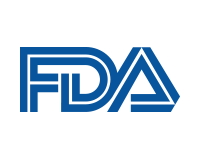U.S. Department of Health and Human Services
Date of this Version
2017
Document Type
Article
Citation
MOLECULAR CARCINOGENESIS 56:1554–1569 (2017).
Abstract
UV induces CIRP expression and subsequent Stat3 activation, but the biological function and mechanism of CIRP and Stat3 in mediating UVB-induced skin carcinogenesis have not been fully elucidated. In this study, we demonstrate that CIRP is elevated in all tested melanoma and non-melanoma skin cancer cell lines; and the expression of CIRP is upregulated in keratinocytes after being irradiated with relatively low dose (<5 mJ/cm2), but not high dose (50 mJ/cm2), UVB acutely and chronically. The increased expression of CIRP, either induced by UVB or through overexpression, leads to resistance of keratinocytes to UVB-induced growth arrest and death; and reduced expression of CIRP by RNA knockdown sensitizes keratinocyte cells to the low dose UVB radiation. We also demonstrated that CIRP expression is required for the low dose UVB-induced Tyr705-phosphorylation, but not total amount, of Stat3. The p-Stat3 level is correlated with the expression levels of cyclin D1 and VEGF, two known downstream cell growth regulators of Stat3, as well as Bag-1/S, an apoptosis regulator. Inhibition of Stat3 DNA-binding activity by S3I-201 leads to a reduction of the p-Stat3 and Bag-1/S along with growth and survival of keratinocytes post-UVB; and the effect of S3I-201 on the UVB-irradiated cells can be partially inhibited by overexpression of CIRP or Bag-1/S. Furthermore, the overexpression of Bag-1/S can totally inhibit UVBinduced PARP cleavage and caspase 3 activation. The results presented above led us to propose that CIRP-p(705)Stat3 cascade promotes cell proliferation and survival post-UVB via upregulating the expression of cyclin D1 and Bag-1/S, respectively.
Included in
Dietetics and Clinical Nutrition Commons, Health and Medical Administration Commons, Health Services Administration Commons, Pharmaceutical Preparations Commons, Pharmacy Administration, Policy and Regulation Commons


Comments
U.S. government work.